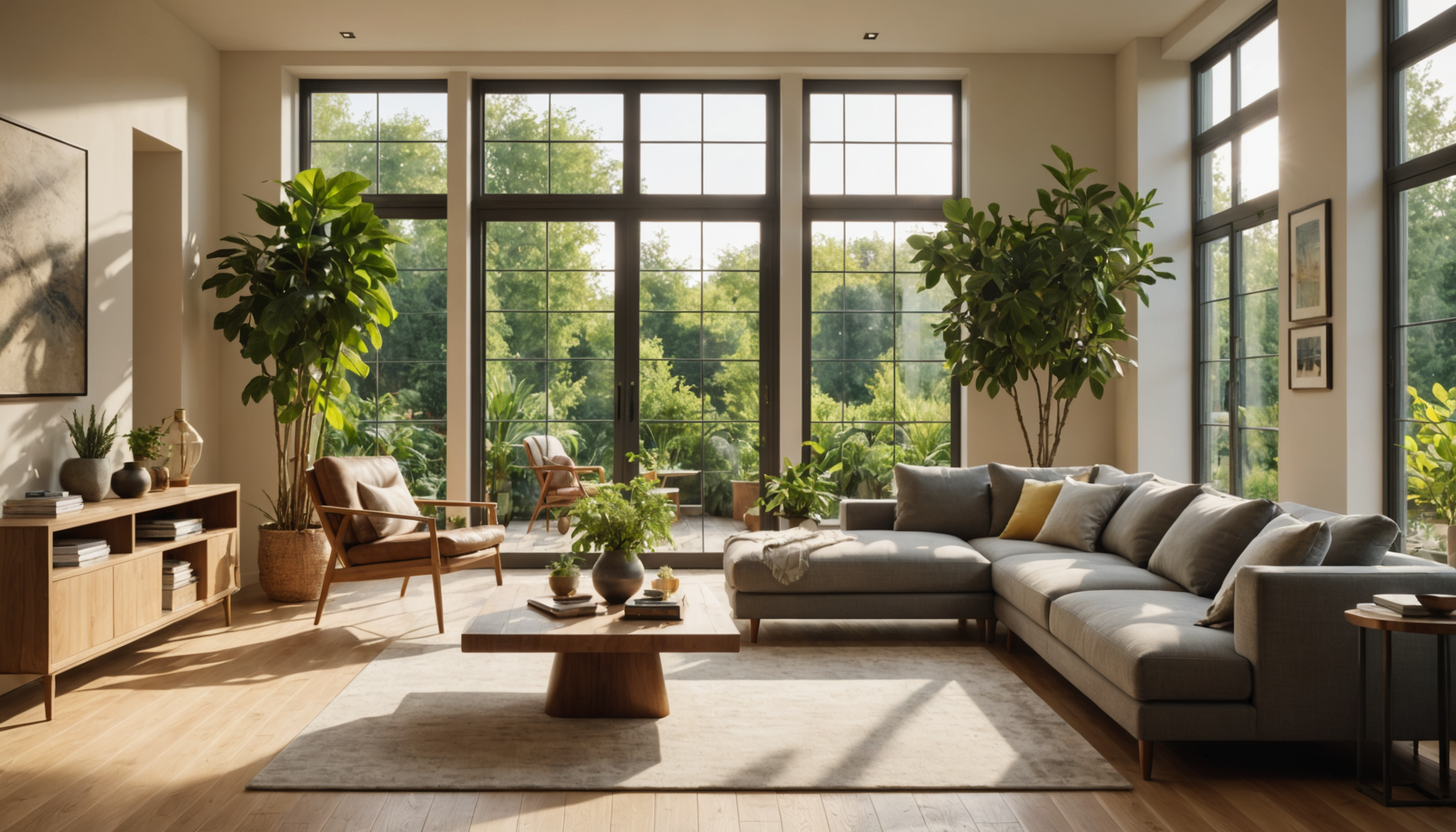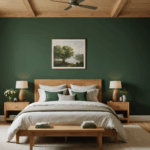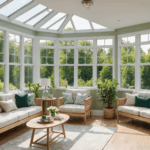Homeowners looking to revamp their living spaces are increasingly turning to modern glass upgrades as a multifaceted solution. These enhancements offer a range of benefits that go beyond mere aesthetics, making them a compelling choice for any renovation or home improvement project. One of the most significant advantages of glass enhancements is their ability to amplify natural light within a space. By allowing for increased sunlight penetration, these upgrades can create a brighter, more welcoming atmosphere in any room, which can have a positive impact on mood and energy levels.
Another key benefit of glass enhancements is their capacity to improve a home’s energy efficiency. Modern glass technologies, such as double glazing and low-emissivity coatings, significantly reduce heat transfer, helping to maintain a stable indoor temperature year-round. This means reduced reliance on HVAC systems and lower utility bills. Moreover, some glass products incorporate smart technology, which allows for dynamic tinting or shading based on the time of day or the level of sunlight. These features can contribute to further energy savings and optimize indoor comfort.
Beyond energy considerations, enhanced glass options provide superior noise reduction capabilities. For those living in busy urban environments or near noisy areas, upgrading to specialized acoustic glass can substantially reduce unwanted exterior sounds, creating a more peaceful and serene living space. This improvement is not only beneficial for comfort but can also positively affect health by minimizing stress and improving overall wellbeing.
The durability and safety of improved glass installations should also not be overlooked. Modern glass technologies encompass toughened and laminated options that offer increased resistance to impact and shattering. This makes them a safer choice, particularly in households with children or in areas susceptible to storms or accidental impacts. Laminated glass, for example, stays in place even when broken due to its interlayer, reducing the risk of injury from glass shards.
| Standard Glass | Enhanced Glass | |
| Light Transmission | Limited | High |
| Energy Efficiency | Low | High |
| Noise Reduction | Minimal | Significant |
| Security | Basic | Advanced |
The benefits of modern glass enhancements are manifold, spanning aesthetic, functional, and economic aspects. By choosing to upgrade, homeowners can enhance their living environment in ways that are both visually appealing and practically beneficial.
types of glass upgrades
There are numerous glass upgrades available, each tailored to specific needs and preferences. Here’s a guide to some of the most popular and innovative types of glass upgrades you can consider for your home improvement project:
1. Double Glazing:
– This type of glass consists of two glass panes separated by a layer of air or inert gas.
– To install double glazing, replace existing single-pane windows with a double-glazed unit. Ensure the frame is sealed properly to prevent leaks.
– Benefits include better insulation, reduced energy bills, and improved soundproofing.
2. Triple Glazing:
– Similar to double glazing, but with three layers of glass and two air pockets.
– Ideal for homes in extreme climates, it offers superior insulation compared to double glazing.
– Reduces heat loss and noise more effectively, but can be heavier and more expensive.
3. Low-Emissivity (Low-E) Glass:
– A special coating is applied to the glass surface to minimize the amount of ultraviolet and infrared light that can pass through without compromising the amount of visible light.
– Install Low-E glass in windows that receive a lot of sunlight to maintain a comfortable indoor temperature.
– This type reduces energy use and blocks heat gain.
4. Smart Glass:
– Also known as switchable glass, it can change its properties from clear to opaque with the flip of a switch, remote control, or via an app.
– Ideal for privacy and lighting control in offices or bathrooms.
– Installation requires electrical wiring and a control mechanism.
5. Tempered Glass:
– It is treated with heat or chemicals to increase its strength. When broken, it shatters into small, blunt pieces.
– Benefits include enhanced safety and durability, making it suitable for doors, showers, and staircases.
– Typically installed during the manufacturing process but can be customized for existing setups by professionals.
6. Laminated Glass:
– Composed of two layers of glass with an interlayer of plastic for added strength and security.
– Installation involves replacing existing window panes to enhance properties such as security and soundproofing.
– Protects against UV rays, reduces noise, and maintains structural integrity even when broken.
7. Acoustic Glass:
– Specially designed to improve sound insulation by using varying glass thicknesses and laminated layers.
– Ideal for homes located near airports, highways, or busy urban areas.
– Replace standard window panes to improve indoor peace and reduce sound pollution.
Selecting the right type of glass upgrade can greatly impact the functionality and comfort of your home. Each of these options offers unique benefits, and choosing the best one depends on your specific requirements and environmental conditions. Working with a professional installer can ensure the best fit and performance of your chosen glass upgrade.
energy efficiency considerations
When considering modern glass upgrades, it’s crucial to evaluate how they contribute to energy efficiency, a priority for many homeowners aiming to reduce their carbon footprint and decrease energy expenses. These improvements can have a significant impact on both comfort and sustainability in your home.
One of the most transformative aspects of upgrading your glass is the potential for enhanced insulation. Options like double or triple glazing are particularly effective. These modern glass solutions create a barrier that minimizes heat transfer due to the air or inert gas-filled space between panes. In cooler weather, they help retain heat indoors, reducing the strain on your heating system. Conversely, during hotter months, they maintain a cooler indoor temperature, which benefits air conditioning efficiency. The result is lower energy bills and a more stable indoor environment regardless of the season.
Another crucial consideration is the inclusion of Low-Emissivity (Low-E) coatings. These advanced coatings are designed to control heat transfer through windows without limiting the passage of visible light. They reflect heat back to its source, ensuring warmth is kept inside during winter and reducing heat gain in summer. This reflects directly on your energy bills, as you rely less on artificial heating or cooling methods. Moreover, Low-E glass also blocks up to 99% of UV radiation, protecting your furnishings from fading due to sunlight exposure.
Smart glass technologies further amplify energy efficiency. This innovative solution allows for dynamic light and heat management by adjusting its transparency according to external conditions, often automatically. By controlling the amount of light and heat entering your home, smart glass reduces the need for artificial lighting and cooling, contributing substantially to energy conservation.
Moreover, integrating solar control glass can greatly benefit homes receiving excessive sunlight. These specialized coatings on glass help modulate the solar rays entering through windows, reducing glare and heat gain while maintaining visibility. This technology is ideal for southern-facing windows or sunrooms, achieving a perfect balance between brightness and comfort.
Finally, when planning glass upgrades, consider the window frame materials and installation techniques. Well-insulated frames and professional installation are vital to maximize the energy-efficiency benefits of high-performance glass. Leaks and drafts are often a result of improper installation, which can negate the benefits of even the most advanced glass solutions.
Emphasizing energy efficiency in modern glass upgrades not only improves your home’s comfort and reduces environmental impact but also contributes to significant long-term savings. By selecting the right glass type and ensuring proper installation, you create a living space that is not only more sustainable but also more economical and comfortable throughout the year.
design trends in glass
In recent years, glass has evolved far beyond its traditional role as a mere functional building material, becoming a stylish design element in its own right. One of the most remarkable trends is the use of glass to create uninterrupted views and seamless indoor-outdoor transitions. With the help of large, frameless glass panels and sliding doors, homeowners can enjoy panoramic views and an influx of natural light while maintaining a modern aesthetic. This trend not only maximizes visual appeal but also encourages a connection with the outdoors, improving the overall atmosphere of the home.
Another exciting trend is the use of colored and textured glass. Designers and architects are experimenting with tinted glass panels to add a splash of color to interiors, which can drastically change how a space feels. Textured glass, such as frosted, etched, or patterned surfaces, is also gaining popularity. These options allow for privacy without sacrificing light, and they add a sophisticated visual interest that enhances almost any room. Textured glass is particularly useful for bathroom enclosures and office partitions where privacy is desired, yet style is a priority.
Decorative glass is also on the rise, with intricate designs and artistic flair transforming ordinary glass into stunning focal points. Techniques such as stained glass, which harks back to traditional craftsmanship, are being reimagined in modern settings. These artistic elements can be used in windows, doors, or as standalone art pieces, contributing an elegant touch that complements both classic and contemporary interiors.
Incorporating glass in unexpected places has become increasingly trendy as well. For instance, glass staircases, shelves, and even furniture pieces like tables and desks create a sleek, airy look. These installations help optimize light distribution and encourage a minimalist design approach that aligns well with open-plan living, which remains a popular choice.
Furthermore, the integration of smart glass technologies has revolutionized flexibility in design. Smart glass, capable of changing from transparent to opaque, offers privacy on demand without the need for physical blinds or curtains. This feature is particularly suited for modern, tech-savvy homes aiming to combine functionality with futuristic aesthetics.
Lastly, sustainability continues to drive design trends in glass. Recycled glass and environmentally-friendly production methods are becoming key considerations for both consumers and designers. The use of sustainable materials not only benefits the environment but also appeals to a growing market of eco-conscious homeowners seeking stylish yet responsible design solutions.
These trends demonstrate the versatility and enduring appeal of glass as a crucial design element. By embracing these innovations, homeowners can enhance their living spaces with modern glass solutions that marry style with practicality, providing both beauty and function.
installation and maintenance tips
When considering glass upgrades, installation plays a pivotal role in ensuring optimal performance and maximizing benefits. The process typically involves assessing the current infrastructure and carefully selecting the right type of glass that aligns with both aesthetic and functional goals. While some basic projects can be tackled by experienced DIY enthusiasts, professional installation is often recommended to address the technical demands of modern glass technologies.
Begin by consulting with a professional installer who can evaluate the structural integrity of your existing window or door frames. This ensures that the upgraded glass will be adequately supported and function as intended. During installation, the use of precision tools and proper sealing techniques is crucial to prevent air leaks and moisture intrusion, which could compromise energy efficiency and the longevity of the glass.
Once installed, maintaining your glass upgrades is essential to preserve their appearance and function. Regular cleaning with a gentle, non-abrasive cleaner helps to keep glass surfaces clear and free of dirt or streaks. In areas prone to mineral deposits or water stains, consider using a water repellent treatment to minimize buildup. For glass with special coatings, such as Low-E or smart glass, it’s important to follow manufacturer guidelines to avoid damaging the surface.
Routine inspections are advised to check for any wear in the seals or hardware, such as hinges and locks, which should be tightened or replaced as needed to ensure security and efficiency. Catching signs of wear early can prevent more significant issues later on.
For high-tech options like smart glass, ensure that electronic components are functioning correctly and that switches or remote-control systems are responsive. Software updates or technical support from the manufacturer may also be available to keep these systems running smoothly.
In climates that experience harsh weather conditions, taking preventative measures such as installing storm shutters or protective film over the glass can help mitigate damage risks from environmental factors.
By prioritizing careful installation and consistent maintenance, homeowners can enjoy the full range of benefits offered by modern glass upgrades, enhancing both the aesthetic appeal and functional comfort of their homes.
Incorporating modern glass upgrades into your home can vastly improve its aesthetics, functionality, and energy efficiency. From enhancing natural light and providing seamless indoor-outdoor connections to reducing energy bills and increasing security, glass upgrades offer numerous advantages. By understanding the types of glass available, considering energy efficiency, aligning with current design trends, and following proper installation and maintenance practices, you can transform your home into a bright, efficient, and stylish living space that meets contemporary demands.


